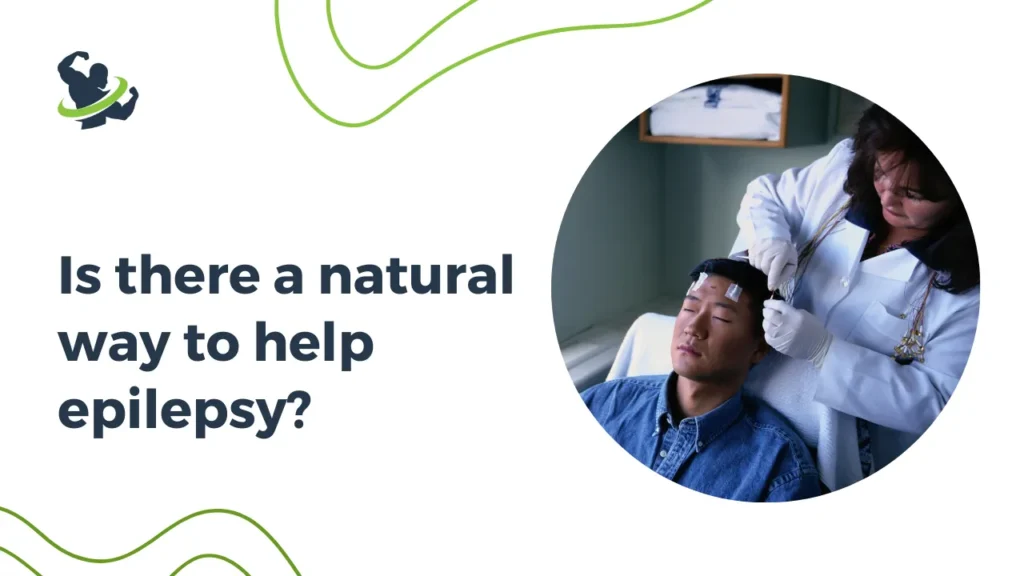
Is there a natural way to help epilepsy? : Friends frequent spasms or convulsions. This disease is also called fever. Epilepsy is a disease of the brain. The mental illness called epilepsy or hysteria (hysterical neurosis) and epilepsy are different diseases.
Information is exchanged in the nervous system by means of electronic impulses. When this electrical function of the nervous system becomes faulty for some reason, abnormal electrical impulses affect that part of the central nervous system or the entire central nervous system. This action is called seizure. The functioning of the affected part of the nervous system also becomes abnormal. If the part is performing motor function, the patient becomes rigid or jerky rhythmically. It is as if that part of the body is in absorption of the part performing the sensory function. Or it produces abnormal sensations, ie paresthesia. Similarly, the patient experiences delusions, hallucinations or strange feeling. Such short, acute and repeated dysfunction of the nervous system is called epilepsy.
Friends, in this article we will tell you further that is there a natural way to help epilepsy? Sleeplessness, excitement, extreme fatigue, certain drugs, alcohol, fasting, certain types of light or noise can trigger seizures in an epileptic patient. Sometimes the patient starts having cramps without any reason.
Is there a natural way to help epilepsy?
When there is an injury, infection, tumor or abnormal blood flow to any part of the brain, there is a disturbance in the power of the brain and it causes epilepsy. Sometimes congenital malformation of the brain also causes epilepsy. Certain metabolic disorders such as low blood sugar or oxygen levels, alcohol addiction or alcohol deficiency, imbalance of various ions, liver failure and high fever in children – also cause epilepsy. In most cases, the root cause of epilepsy is not known. So such epilepsy is called idiopathic. Friends, Is there a natural way to help epilepsy? Before telling this, we will tell you about the types of epilepsy.
Types of Epilepsy: Is there a natural way to help epilepsy?
There are mainly two types of epileptic seizures:
- primary generalized epilepsy and
- partial epilepsy
When the electrical abnormality affects the entire central nervous system, a basic generalized seizure occurs and when it is limited to a part of the central nervous system, it is a partial seizure.
Primary generalized epilepsy
There are also several types of basic broad absorption (BAS). Its main types are grand mal or tonic-clonic seizures. This type is commonly known as spasm or convulsion. The patient suddenly completely loses consciousness without any premonitions (hallucinations). Some patients have an uncertain prognosis.
As the tone of all the muscles increases simultaneously, the patient’s muscles become tight or tense and his body becomes rigid in an arched shape. The patient screams due to the contraction of the breathing muscles, the color of the body becomes brown due to suffocation, sometimes the tongue gets stuck between the teeth and the faeces or urine comes out, sometimes the patient gets hurt when he falls. .
A patient who has become rigid then begins to have slow, rhythmic spasms. The stage in which the patient becomes rigid is called the tonic stage, while the stage of jerks caused by rhythmic contractions is called the clonic stage. Gradually the tremors stop and the muscles relax. The patient remains in deep sleep or unconsciousness for some time. Even after gradually regaining consciousness, the patient feels disoriented, lost, and without a sense of place and time. He is completely unaware of the incident of assault. Sometimes he does not remember recent events before the seizure.
Sometimes the contraction phase is not followed by the muscle phase. This type of absorption is called tonic absorption. Sometimes the patient neither loses consciousness nor enters a convulsive state, but has a sudden, brief, contraction of a single muscle or the entire muscle. The patient falls down with seizures and has a seizure. This is called a myoclonic seizure. Another type of basic generalized abduction in which all muscles suddenly lose contractility and the patient falls to the ground is called atonic abduction. This usually occurs in children.
Partial epilepsy
Another major type of epilepsy are partial seizures. Absorption confined to one part of the nervous system is called partial or focal absorption. As mentioned in the beginning, the effects of this absorption are seen according to the function of that part of the brain. The patient’s fingers, hands, or mouth muscles twitch, or a limb feels as if they are lying down, they experience false readings, hallucinations or emotional arousal, and vertigo.
Hueglingz also calls it the ‘Jacksonian takeover’ because Jackson first described the type. If the patient does not lose consciousness during this entire operation, it is called a simple spinal cord capture. If there is a loss of consciousness, it is called a complex syncope. A patient with complex homonymous absorption may perform reflex actions such as pulling at clothing, biting, or biting the lips for no apparent reason. Sometimes it also performs actions like running a motor.
Sometimes, when afferent afferent dysfunction spreads throughout the central nervous system, the patient experiences spasms throughout the body, similar to a typical generalized afferent gravitation. This type of absorption is called secondary absorption. A patient with an adjunctive generalized seizure experiences a simple convulsion-absorption before fainting.
He can feel the patient as he starts twitching when the movements begin. Then the information received before the coming stretch is called aura. In addition, when the patient regains consciousness of generalized disfigurement, sometimes, paralysis of one side of the body (Todd’s palsy) is experienced. Usually this paralysis gets better in a day or two. Hallucinations and Todd’s palsy are not observed in a patient with basal total absorption.
If the patient has repeated, superficial seizures without regaining consciousness, it is called status epilepticus. In non-miniature forms, the patient may die if not treated promptly. Come on friends, can we tell you that is there a natural way to help epilepsy? Let’s tell about it.
Investigation and Diagnosis: Is there a natural way to help epilepsy?

Friends, now let us tell you that is there a natural way to help epilepsy? Epilepsy can be easily diagnosed by the age of the patient, the type of seizure, and the neurological symptoms or signs. However, most idiopathic epilepsy patients do not show neurological symptoms because the brain structure is intact.
Other patients require special tests, such as head X-rays, blood, urine tests, or CT scans, to rule out the underlying disease of the seizure. scan’ etc. is required. A quarter (75%) of patients have changes in brain activity even when they are not having an epileptic seizure. This can be captured in an electroencephalogram (EEG). It is often clinical.
- Patients between the ages of 15 and 20 are more likely to have epilepsy of unknown origin, while patients over the age of 20 may have a brain tumor or other disease, requiring a thorough physical and clinical examination. Is.
- The treatment of each patient can be divided into two parts: (1) treatment of the underlying disease (if any), followed by neurosurgery if necessary. (2) Absorption-limiting drugs, which are effective in 60% to 75% of patients. There are many medicines available.
- Such as carbamazepine, diphenyl hydantoin, ethosuximide, ethyl and methyl-phenyl hydantoin, paramethadione, phenesamide, phenobarbitone, primidone, valproic acid, clonazepam, diazepam etc. Different types of medicines work in different types of epilepsy.
- The decision to start or stop drugs can only be made taking into account the type of seizure and the physical and neurological status of the patient.
- Many patients have to take medications for life, while most can be gradually weaned off if they go 3 to 4 consecutive years without seizures. Microbial epilepsy is easily controlled, so after taking the medicine for 2 to 3 years, the medicine can be discontinued as per medical advice.
- Children of parents with epilepsy are very likely to develop the disease (35:1), but their child is more likely to develop the disease if there is a specific genetic defect or other family members with the disease or EEG changes. The mother or father who are unaffected remains possible.
- During pregnancy, it is advised to change the medicines and stay under the supervision of a doctor to control the seizures.
- Most seizures stop on their own after a certain period of time. Holding the patient firmly does not stop the convulsions. In addition to intravenous injection of diazepam as immediate treatment, care is taken not to obstruct breathing or injure the patient.
- Unless there is a head injury or a water or vehicle accident at this time, the chance of death is generally considered negligible.
- Treatment of the underlying disease and continued medication for an appropriate period of time can result in long-term remission of epilepsy.
Conclusion
Friends, in this article we told you in detail that is there a natural way to help epilepsy? If you liked this post then don’t forget to share it with your friends.
